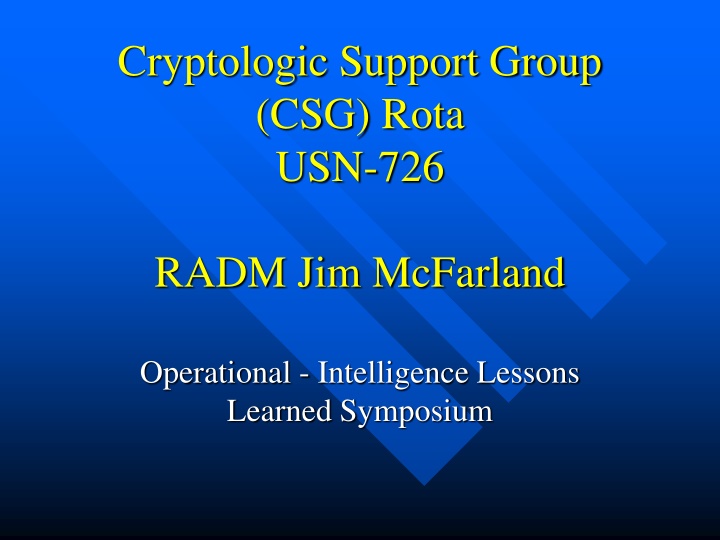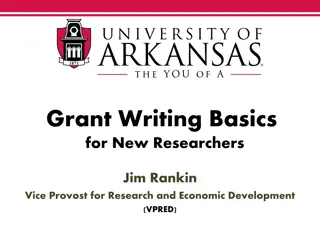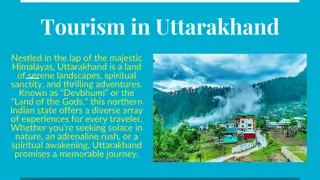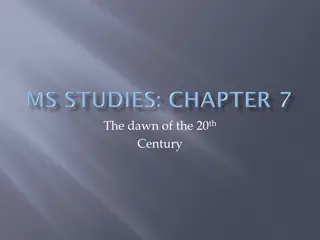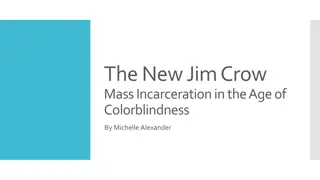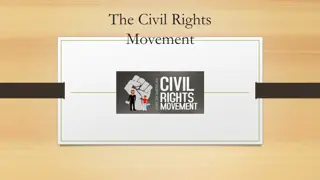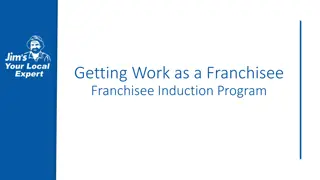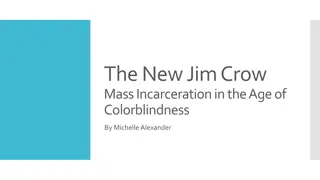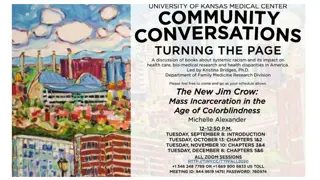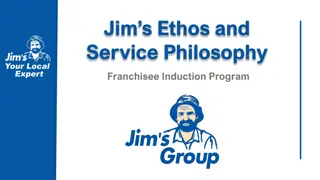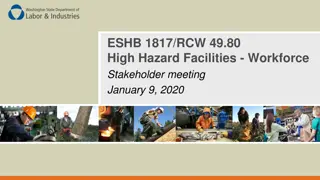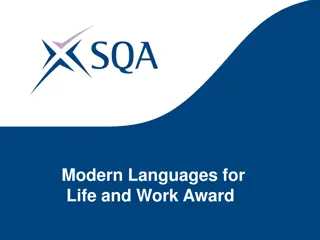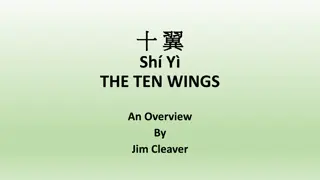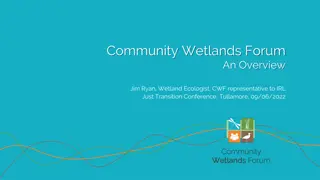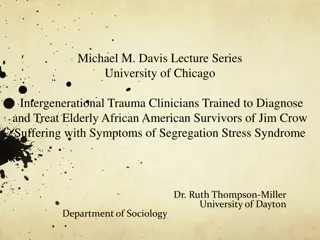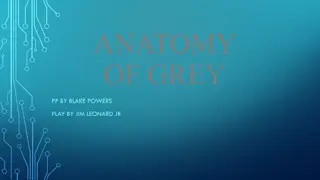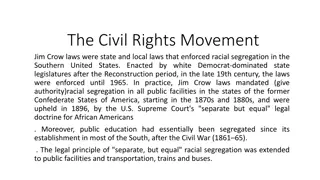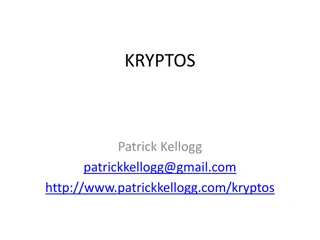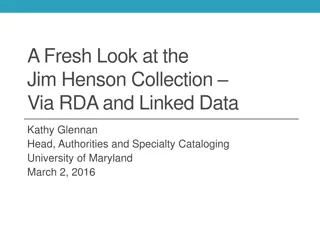RADM Jim McFarland
The Operational Intelligence Lessons Learned Symposium at Cryptologic Support Group Rota USN-726, led by RADM Jim McFarland, delves into the background and mission of the group, highlighting key moments from its establishment to its operational focus. The creation of the CSG, its link to historical events such as Vietnam, and the strategic shift towards supporting the fleet are explored through insightful recollections and lessons learned.
Download Presentation

Please find below an Image/Link to download the presentation.
The content on the website is provided AS IS for your information and personal use only. It may not be sold, licensed, or shared on other websites without obtaining consent from the author.If you encounter any issues during the download, it is possible that the publisher has removed the file from their server.
You are allowed to download the files provided on this website for personal or commercial use, subject to the condition that they are used lawfully. All files are the property of their respective owners.
The content on the website is provided AS IS for your information and personal use only. It may not be sold, licensed, or shared on other websites without obtaining consent from the author.
E N D
Presentation Transcript
Cryptologic Support Group (CSG) Rota USN-726 RADM Jim McFarland Operational - Intelligence Lessons Learned Symposium
Creating the CSG Background The Early Days Some Brief Highlights Some Lowlights Intelligence Recollections Command and Control
Creating the CSG - Background Vietnam dragged NSA into tactical support Timeliness Information requirements Bits and pieces in operational environment - not code breaking Demonstrated the value of sigint to tactical operations
Creating the CSG - Background By the end of 1970, FOSIF Rota was already stressing NSA and cryptologic field elements for tactical (primarily C3) info Opscom circuit to CSOC NSG analysts on board at FOSIF NSA was bombarded by meaningful requirements statements originated by professional sigint analysts
Somehow, I think the creators of FOSIF underestimated the reaction of USN-24, many people in the NSG hierarchy and certainly almost the entire National Security Agency. RADM J. McFarland
Solution Was The Cryptographic Support Group CDR Jim McFarland was sent as first OINC in March of 1971 Tactical rep with Marines in Vietnam Recent experience at NSA in Middle East Group Takeover and augment the NSG analysts already on board
The CSG Mission According to: NSA: Support the fleet after we tell you what support you can provide. NSG: ...make sure you understand USN-24 is the preeminent Soviet Navy SIGINT authority in the Mediterranean.. McFarland: Support the fleet.
The CSG Charter None (Not too different from FOSIF) There was no authority to do unique analysis nor to levy any tasking But three bosses: COMNAVSECGRU (reporting senior) CINCUSNAVEUR (concurrent) NSAEUR (concurrent)
Rota, the Early Days On arrival - cultural shock - My office is a stool. Three good CPO NSG analysts Dave Foster: Submarines Jerry Bloom: Air Chad Johnson: Air
CSG Augmentation LTJG Marv Nowicki: Arab/Russian linguist with extensive VQ experience Master Sargent Al Sapp, USAF: Extensive Soviet and Middle East experience and a doctorate Art Kennedy, NSA civilian: C3 expertise CPO Rich Gaidusek: Black Sea Fleet and Med Fleet expert
Some Highlights Heavy Soviet orientation, but frequent focus on littoral conflicts: Arab/Israeli; Greek/Turk/Cyprus; Lebanon; terrorists Submarine analysis - hallmark of FOSIF/CSG coordination C3 analysis Contributions to VQ and to USN-24; we helped make them better
CSG/ FOSIF Working Relationships FWC was perfect for two cultures that had to mix Mutual respect and close professional ties that matured to long friendships Each had something to offer - together we were powerful We both owed allegiance to nobody but the SIXTHFLT We worked together and played together
Lowlights Heavy politics dominated the first two years of the CSG Cryptologic world Turf battles Usually sparked by NSA, but sometimes aided and abetted by NSG and USN-24
The Rota complex is truly complex. It is impossible to discern the players without a program and there is no distinction between the FOSIF and the CSG. In fact there is not even any physical distinction because they all share the same space! Worse yet, the CSG is reviewing and has access to RAW Sigint thus duplicating the analysis of the field station, as well as NSA. Even worse, it is reporting first on many Med-related events without any oversight from SIGINT authorities. The CSG Officer in Charge knows the system and is only concerned with supporting the fleet in whatever manner he can with or without a proper charter. We have created an unchecked monster in Rota. NSAEUR Senior Civilian in official trip report
Intelligence Recollections In most any crisis , initial reporting is always inaccurate and usually misleading It pays to let some of the smoke clear before defining the situation in too much detail Name a crisis through today and you ll have an example - e.g.., Achille Lauro, Stark, Vincennes, attacks in the Gulf, etc.
Source Protection Probably not a real problem within the Navy - leaders generally have trust and confidence in their intelligence support Source validation usually originated from intelligence staffers to satisfy their curiosity or expand their knowledge Cannot recall a single incident where anyone in a command position did not use intelligence because I would not reveal source.
Source Protection (cont) FOSIF and CSG sanitized freely, much to the chagrin of NSA and others Not aware of any problem nor damage to system Operators were happy to get the information and did not care about source Sanitization became almost perfunctory and was never challenged by users
Reporting on Crisis Events Everybody wants to get into the act and help People on scene are inundated with intelligence support, which gets in the way of perishable intelligence and often throws a lot of chaff into the equation FOSIF often acted as the SIXTHFLT clearinghouse and put lots of junk to ground to the distress of originating intelligence agencies/staffs
Reporting on Crisis Events (con t) Tried to discern what could stand on its own and provide value This was a key job The answer is usually somewhere in the system Challenge is to find it and get it to those who can use it
Soviet Command and Control A cherished term in the NSA in the 70 s Exclusively the domain of Soviet Section Efforts were centralized at NSA and very tightly controlled Our efforts in Med broke new ground and disrupted NSA's own command and control
Soviet Command and Control (con't) Art Kennedy, an NSA civilian, was sent from C3 Division to assist FOSIF-CSG in this endeavor His guidance was to institute more control over our C3 reporting Once he understood what we were doing and the critical importance of such intelligence as targeting, he became our staunchest advocate
Soviet Command and Control (con's) During 1973 Mideast war, Soviet Med Fleet built up to over 100 units. VADM Murphy, COMSIXTHFLT, cited the daily C3 report as the single most important intelligence report he received during the crisis It provided the key intelligence for SIXTHFLT operational targeting of Soviet units Later assumed by NSA and incorporated as a regular summary reporting vehicle
